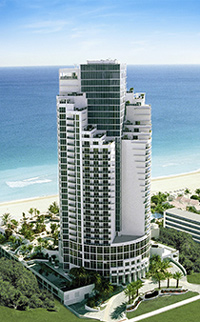Silovoj Blok Smerch 120 Elina Podklyuchenie

The area around the Soča Valley has been known as Posočje since the end of the Second World War. The River Soča, a true emerald-coloured gem in the heart of the mountains, is home to the Soča trout. At the same time, it is a very attractive river for white water sports such as kayaking, canoeing and rafting. A visit to the Valley must encompass the sites which bear witness to the fierce fighting on the Isonzo Front during the First World War, which is also documented at the Kobarid Museum. Up in the mountains, numerous strongholds, pillboxes and trenches have survived. Visitors seeking to know more about this historic battleground can visit the spectacular Kluže Fortress or take a tour of privately owned weapons collections.
On the right bank of the Soča, near Nova Gorica lies a wine-producing area known as Goriška Brda, a hilly and green land to the west of the Italian town of Gorizia, which at its southern end meets the Friulian Plain. Goriška Brda is one of the country’s best-known wine regions, also renowned for cherry and olive trees. Nova Gorica is the youngest Slovenian university town. It is also known as an entertainment and casino centre, which attracts many Slovenian and foreign guests. The Franciscan monastery at Kostanjevica houses the tomb of Charles X, the last Bourbon King of France who, when exiled from France, found refuge in Gorizia. The influence of the Mediterranean climate reaches furthest inland in the Vipava Valley.

The green lush Devon countryside. The camera is tracking along a hedgerow beside the road. We see a head whizzing along, sometimes just above the hedgerow and sometimes bobbing out of sight, accasionally for long periods.
The Valley lies between the Karst Plateau to the south, and the Trnovski gozd Plateau and Mt Nanos to the north. The small town of Ajdovščina is the seat of the Pipistrel Company, a manufacturer of top-quality, world-famous ultra-light aircraft.
The land between the Gulf of Trieste, the Brkini Hills and the Vipava Valley is known as Kras. Experts also refer to it as the original Karst, as the word karst and karstic refer to many specific geological processes and phenomena.
This word was adopted by many languages around the world and also gave its name to karstology, a science specialising in exploring different aspects of these phenomena. The Karst is also home to white Lipizzaner horses, named after the village of Lipica, where they were first bred in 1580 by crossbreeding the original Karst horse with Spanish, Neapolitan and Arab breeds. The new breed was fast and perfectly suited to the needs of the Imperial court, the army and the Spanish Riding School in Vienna. The term Slovenian Istria designates the northernmost and north-western part of the Istrian Peninsula between the Kvarner Gulf and the Gulf of Trieste. It extends from the Adriatic Sea to the west towards Kraški rob and Bržanija to the east, and from the Italian border to the north towards the River Dragonja or the Croatian border to the south. This is a very picturesque and varied area, characterised by vineyards, olive trees and Mediterranean fruit trees. On the coast, sea salt and fleur de sel are produced; the sea has fish in abundance; truffles can be found in the woods and meadows.
There are also chestnut trees, herbs and spices aplenty, as well as a multitude of wild animals. The most important site in the region is the Romanesque church of the Holy Trinity in the village of Hrastovlje. The church dates back to the early 12th century and is famous for its wall frescoes, especially the depiction of the Dance of Death.
Besides scenic stone villages, there are three famous ancient coastal towns in the region: Koper, Izola and Piran. Also of importance is the seaside resort of Portorož, with its lively tourist industry, which began in the early 1900’s. The town of Koper has an important commercial port, Luka Koper. In 2003, Koper also became a university town. For a relatively small area, Slovenia offers a unique mosaic of biological, geographical and cultural diversity, with dozens of major natural assets and items of significant European cultural heritage.
We would like to show you a description here but the site won’t allow us. Viskazivaniya sari alpisovni. See more of Vizsnyiczai Sari on Facebook. Create New Account. See more of Vizsnyiczai Sari on Facebook. Forgot account? Create New Account. Vizsnyiczai Sari. Community See All. 260 people like this. 252 people follow this. About See All. Contact Vizsnyiczai Sari on Messenger.
Around 12,6% of Slovenia’s territory is cover by protected natural areas, 36% of the territory is protected under Natura 2000, and almost 15,000 aspects of the country’s nature have been awarded the status “valuable natural feature”. -published by the Ministry of the Environment and Spatial Planning, 2011 (in several languages).